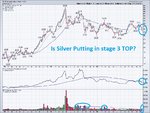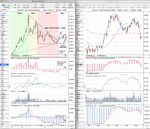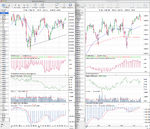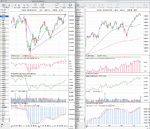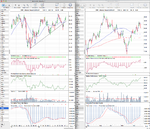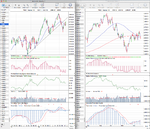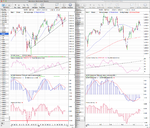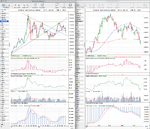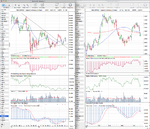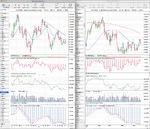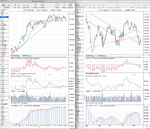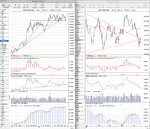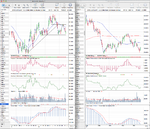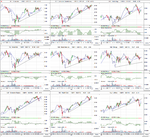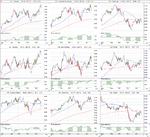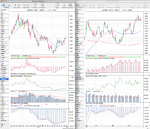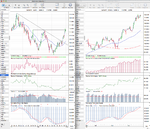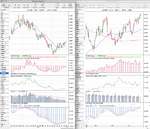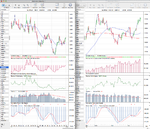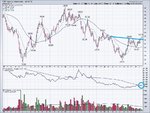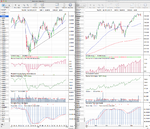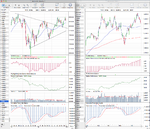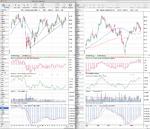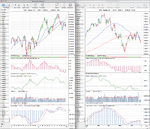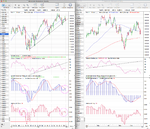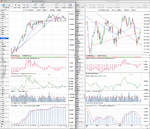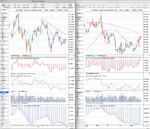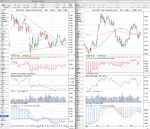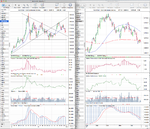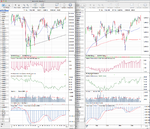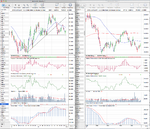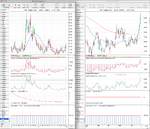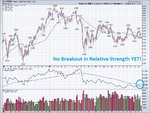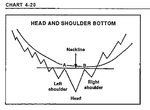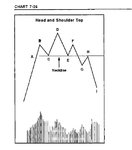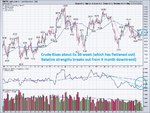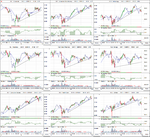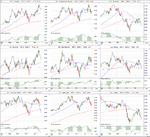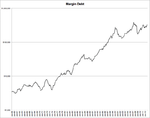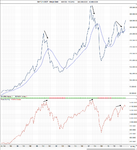Has SILVER put in a MAJOR STAGE 3 TOP????
Isatrader thanks for the great post on Gold. I'm starting to think a major top may be in for precious metals across the board (I'm now short silver)
3 Charts I'd like to share which suggest Silver may be putting in a major top or perhaps going into a bearish time.
Chart #1 shows that a flat 150 Moving average for past 12 months and Silver breaking under the 150 (30wk) recently as relative strength declines & breaks down. Also if you review the volume for the past 12-18 months, High RED (Selloff) Volume has dominated the price bars, suggesting DISTRIBUTION. Is this the start of Stage 4???
Chart #2 Shows Silver has recently broken out of a major wedge pattern to the downside.
Chart #3 Shows the relative performance of Silver vs Gold. In precious metals bull runs, silver tends to "outperform" gold. Recently this has shifted and silver has broken trendline and is now grossly underperforming Gold and leading to the downside on the selloff in precious metals.
All 3 charts look ultra bearish for Silver. Unless silver can regain its 150 MA (30week) I'm a BEAR!
Happy Trading. Thanks all and Thank you Stan Weinstein for sharing your methods with the world!!!!
Isatrader thanks for the great post on Gold. I'm starting to think a major top may be in for precious metals across the board (I'm now short silver)
3 Charts I'd like to share which suggest Silver may be putting in a major top or perhaps going into a bearish time.
Chart #1 shows that a flat 150 Moving average for past 12 months and Silver breaking under the 150 (30wk) recently as relative strength declines & breaks down. Also if you review the volume for the past 12-18 months, High RED (Selloff) Volume has dominated the price bars, suggesting DISTRIBUTION. Is this the start of Stage 4???
Chart #2 Shows Silver has recently broken out of a major wedge pattern to the downside.
Chart #3 Shows the relative performance of Silver vs Gold. In precious metals bull runs, silver tends to "outperform" gold. Recently this has shifted and silver has broken trendline and is now grossly underperforming Gold and leading to the downside on the selloff in precious metals.
All 3 charts look ultra bearish for Silver. Unless silver can regain its 150 MA (30week) I'm a BEAR!
Happy Trading. Thanks all and Thank you Stan Weinstein for sharing your methods with the world!!!!

